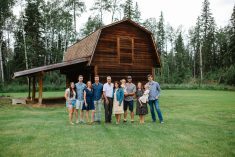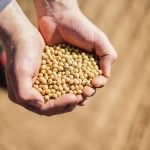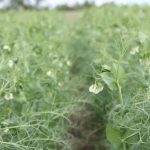of eligible costs, so the farmer pays only $100. For more information
on Growing Forward in Ontario, call 1-888-479-3931 or
In the other provinces, the farm adviser program is delivered
through the provincial ministries of agriculture and grants differ
in the amount and eligibility criteria. Check provincial websites
for more information.
Charlie also completed the Environmental Farm Plan program
and was able to get funding for a pond and for buffer
tree plantings. He appreciated that his EFP form was reviewed
by other farmers to give him new ideas and perspectives.
Read Also

Country Guide November editorial: The now, the next and the numbers
I must admit that when I was younger numbers mystified and frustrated me. In fact, my typically jovial grade six…
The Waddells believe that environmental concerns will
become a bigger issue for their customers in the future. As a
result, they re exploring organic production through research
and a pilot project on aportion of their farm.
Using these government programs forces us to think it
through in a structured process and gives us feedback from
outside eyes and outside resources, says Marita.
Trust yourself,
trust your customers
Over the six years, the Waddells have learned that their plans
had to include trust trust in their own abilities and trust in
their customers. They were concerned about tree damage with
the U-pick part of their operation but it simply didn t happen and
surprisingly there s no littering.
We ll have up to 2,000 people a day on our farm during
the peak season and they re very respectful of our property,
says Charlie.
That s partly due to good planning traffic flow, parking
and having family working on the grounds and involved
on the farm. They ve learned agri-tourism techniques like
these from seminars at Canadian Farm Business Management
Council (
www.farmcentre.com),talking to other retail-farmers,
using their own parents as mentors and reading
specific web-sites and books about on-farm retail such as
Cultivating Agritourism.
Things change so quickly that the Waddells feel they can
only plan in five-year terms. Their first plan s goals were met
sooner than they had thought. Now they re into their second
five-year plan and it too seems to be happening at an accelerated
rate. A second log cabin is being constructed for their
U-pick customers, and now they ve purchased additional land
for diversifying into other crops.
We don t want to grow into a corporate farm structure that
need 50,000 trees to show enough profit, says Charlie. Instead
we want to have 100 per cent retail-to-public sales. It s the only
way I can see to have growth and stability.
Today, Charlie is farming full-time and in the winter substitute
teaches. He taught full-time before they started farming.
Marita works full-time for an information technology company
and part-time on the farm. She takes her holidays during the
busy fall season and does the farm books, other projects and
planning on weekends and in the evenings. In the next few
years the Waddells hope to grow the business so that Marita
can make the transition to farming as her primary occupation
with part-time work and consulting.
Farming, says Marita, has given us an opportunity
to be our own executives, to try new ideas and learn new
things. CG














